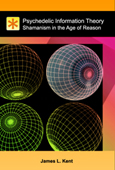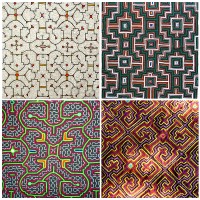
References
The Shipibo Indians: Masters of Ayahuasca
Pantone, DJ; Internet Reference, 2006.
Despite over 300 years of contact with Europeans and Peruvians and the conversion of many Shipibos to Christianity by missionaries in the 1950's and 60's, the Shipibo tribe maintains a strong tribal identity and retains many of their prehistoric shamanic traditions and beliefs. Chief among their traditions is the Ayahuasca (Banisteriopsis caapi) ceremony. Perhaps surprisingly to those who have only experienced Shipibos involved in touristic enterprises, the Shipibos were not always as peaceful as they are presently, nor was their use of Ayahuasca solely employed for peaceful purposes. Prior to the 1960's, the Shipibos were actively involved in warfare with outsiders and sometimes with other Shipibos. According to Michael J. Harner in his essay "Common Themes in South American Indian Yagé Experiences," anthropologists have studied the Shipibo Indians of the Ucayali region of eastern Peru and have reported that a common function of Ayahuasca-taking by shamans is to reap revenge on their enemies. He reports that Shipibo shamans believe that taking Ayahuasca permits the shaman's soul to leave his body in the form of a bird which then can fly to a distant enemy at night. This bird then changes back into the shaman's human form so he can destroy the sleeping enemy. Shipibo WomanUnder the influence of the Banisteriopsis drink mixture, the Shipibo Indians often report seeing giant anacondas, poisonous snakes, and jaguars. Less frequently, other animals are observed in their visions. In addition, Harner reports that often a shaman, taking the drink, believes he acquires giant snakes which are to be his special demons to be used in protecting himself against other shamans in supernatural battles. The Shipibo shamans, under the influence of the drug, believe they imprison other persons' souls with supernatural boats whose demon crews are led by a yellow jaguar and a black puma.
Ayahuasca is commonly depicted by Shipibo artisans, who are well-known for their intricate designs, on their pottery and colorful fabrics depicting their Ayahuasca-based cosmology. The geometric designs used by Shipibo artisans are quite unique. As might be expected, their pottery was initially very simple and used as containers to preserve food. With time, pottery and designs have become more and more complex. The sophisticated designs and geometric patterns of the ceramics are passed from one generation of artists to another. The pieces are extremely soft and light weight and their technique is all done manually without the use of pottery wheels.
Shipibo Women - TapestryThe art form of the Shipibos is little understood by the outside world. To the artists, is not something that they are taught, rather they are inspired to create their distinctive patterns. The women, rather than the men in the village, are the artists. Commonly the women will work together to produce a single piece. Each of the women seems to be moved by the same artistic spirit and one woman can interrupt her work and then assign another woman in the village to complete a particular piece. When the artwork is finished, the resulting piece will look like it was made by a single artist. This really is communal art at its finest.
There are many theories about the meaning of the unique intricate Shipibo geometric patterns. Some anthropologists consider it an ancient language form; others hypothesize that the patterns represent a mapping of the rivers of the Amazon. Some even believe the patterns represent the shapes of the Anaconda. While anthropologists may not be able to agree on the meaning, art lovers can appreciate the beautiful designs, the soft curves and the pristine yet original look of the Shipibo designs.
Web Resource: www.amazon-indians.org
|
This reference is included in the following Listings: |

